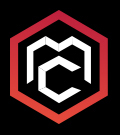Helpdesk pricing structure for MSPs to gain maximum profitability?
May 16, 2023
As an MSP, pricing your help desk services can be a challenging task. On one hand, you want to ensure that your pricing is competitive and attractive to clients, but on the other hand, you also need to ensure that your pricing is profitable enough to cover your costs and generate revenue. In this blog post, we will explore common pricing practices for MSP’s, the financial pitfalls of managing a helpdesk, and how Mission Control NOC and Helpdesk’s pricing structure can affect your bottom line and create flexibility.

Common Pricing Practices for MSPs
As an MSP, there are several pricing models you can use to price your help desk services. The most common ones are:
- Per-user pricing: This pricing model charges a fixed fee per user per month. This model is common in businesses with a large number of employees who require IT support.
- Per-device pricing: This pricing model charges a fixed fee per device per month. This model is common in businesses that rely heavily on technology, such as IT firms or software development companies
- Tiered pricing: This pricing model charges different fees for different levels of service. For example, basic support might cost less than premium support, which includes additional features such as 24×7 support or advanced security services.
Common Financial Pitfalls of Managing a Helpdesk
Managing a helpdesk can be costly, and there are several financial pitfalls you need to be aware of:
- High labor costs: Managing a helpdesk requires a significant amount of staff, including technicians, support staff, and managers. The cost of hiring, training, and retaining these employees can add up quickly.
- Infrastructure costs: To run a helpdesk, you need to have the right infrastructure in place, including hardware, software, and network resources. These costs can be substantial, and they need to be factored into your pricing.
- Fluctuating demand: The demand for helpdesk services can fluctuate depending on the time of year or the needs of your clients. This can make it challenging to predict your revenue and manage your costs effectively.
How Mission Control NOC and Helpdesk’s Pricing Structure Affects the Bottom Line and Creates Flexibility
Mission Control NOC and Helpdesk’s pricing structure can help MSPs overcome some of these financial pitfalls and create flexibility in their pricing. Here’s how:
- Fixed pricing: Mission Control NOC and Helpdesk’s pricing is fixed, which means that you can budget more effectively and avoid unexpected costs.
- Scalable pricing: Mission Control NOC and Helpdesk’s pricing is also scalable, which means that you can adjust your pricing based on your clients’ needs. This creates flexibility and helps you manage your costs more effectively.
- Cost-effective: By outsourcing your helpdesk services to Mission Control NOC and Helpdesk, you can reduce your labor and infrastructure costs, as well as avoid the financial pitfalls of managing a helpdesk in-house.
- 24×7 support: Mission Control NOC and Helpdesk offers round-the-clock support, which means that you can provide your clients with the support they need, when they need it. This can help you attract and retain clients, which can have a positive impact on your bottom line.
Unlocking Profit Potential: Optimizing Helpdesk Pricing with Mission Control NOC and Helpdesk
Pricing your helpdesk services for maximum profitability can be challenging, but it’s essential to the success of your MSP business. By understanding common pricing practices for MSPs, the financial pitfalls of managing a helpdesk, and how Mission Control NOC and Helpdesk’s pricing structure can affect your bottom line and create flexibility, you can make informed decisions about how to price your helpdesk services. Ultimately, by outsourcing your helpdesk services to Mission Control, you can reduce costs, provide better service to your clients, and maximize your profitability.

